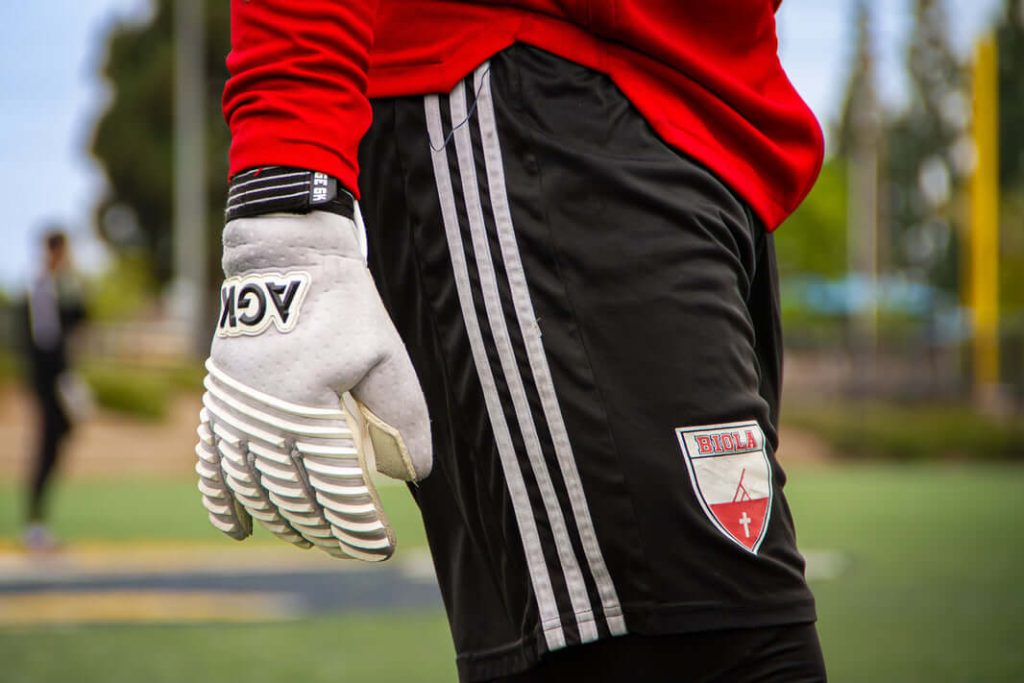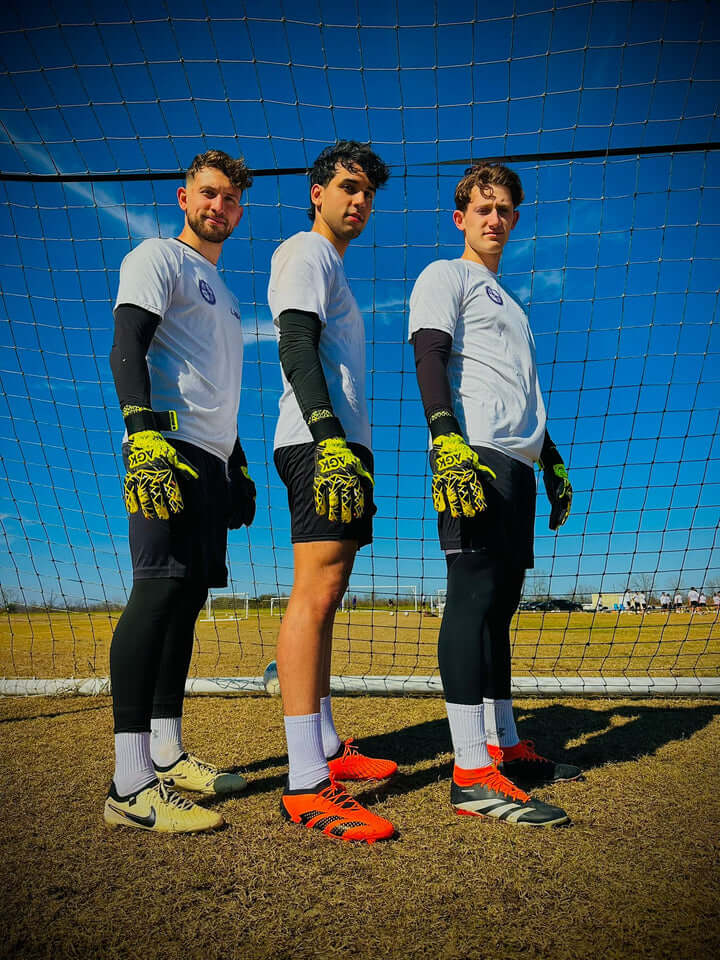Starting a goalkeeper glove brand isn’t just about having a great idea—it’s about understanding a specialized market, navigating complex manufacturing relationships, and building a business that can compete with established brands that have decades of experience. After successfully building and selling a goalkeeper glove brand that now supplies professionals across the United States, I want to share the roadmap that transforms ambitious ideas into profitable businesses.
This comprehensive guide will walk you through every critical decision, from initial concept validation to scaling your operations. Whether you’re a former goalkeeper with product insights, an entrepreneur spotting market opportunities, or a business owner looking to diversify, this guide provides the foundation for making informed decisions.
Phase 1: Market Research and Concept Validation
Understanding the Goalkeeper Glove Ecosystem
The goalkeeper glove market operates differently than general sporting goods. Your customers include individual goalkeepers, parents, coaches, team managers, and retailers, each with distinct purchasing criteria and decision-making processes.
Key Market Segments:
- Youth Players (Ages 8-14): Price-sensitive, outgrow gloves quickly, parents make purchasing decisions
- High School Players (Ages 14-18): Performance-focused, beginning to make their own choices, still price-conscious
- College Players (Ages 18-22): Quality-oriented, brand-aware, often influence team purchasing decisions
- Adult Amateurs (Ages 22+): Value durability and comfort, willing to pay for quality
- Semi-Professional/Professional: Performance is paramount, brand reputation matters significantly
Understanding which segment you’ll target initially shapes every subsequent decision from design to marketing strategy.
Competitive Analysis Framework
Before developing your first design, thoroughly analyze existing brands to identify opportunities and avoid saturated positioning.
Analysis Components:
- Product feature gaps in current market offerings
- Pricing strategies across different quality tiers
- Brand positioning and messaging approaches
- Distribution channel preferences
- Customer satisfaction patterns and common complaints
I spent months analyzing competitor products before developing our first glove, purchasing and testing dozens of models to understand performance differences and identify improvement opportunities.
Concept Validation Techniques
Direct Feedback Methods:
- Survey goalkeepers in your local clubs and leagues
- Interview coaches about their equipment preferences
- Attend goalkeeper training sessions and observe equipment choices
- Connect with soccer retailers about customer requests and feedback
Market Testing Approaches:
- Create detailed product concepts and gather feedback
- Develop basic prototypes for hands-on evaluation
- Test different pricing models with potential customers
- Validate your unique value proposition against existing solutions
Phase 2: Product Development and Design
Technical Specification Development
Professional goalkeeper gloves require precise specifications across multiple performance criteria:
Palm Design Considerations:
- Latex type and supplier selection
- Foam thickness and density requirements
- Grip pattern design for different weather conditions
- Durability expectations based on intended use
Cut and Fit Engineering:
- Hand measurement analysis for target market
- Sizing system development (European vs. US sizing)
- Cut pattern selection (flat palm, roll finger, negative cut)
- Thumb positioning and finger length optimization
Backhand and Closure Systems:
- Material selection balancing protection and flexibility
- Wrist support system design
- Ventilation requirements
- Closure mechanism preferences
Working with Product Designers
Unless you have technical design experience, partnering with professionals accelerates development and prevents costly mistakes.
Designer Selection Criteria:
- Specific experience with goalkeeper glove development
- Understanding of manufacturing constraints
- Ability to create technical specifications for manufacturers
- Knowledge of material properties and performance characteristics
Prototype Development Strategy
Progressive Prototype Stages:
- Concept Prototypes: Basic construction to evaluate fundamental design decisions
- Functional Prototypes: Full-featured versions for performance testing
- Production Prototypes: Final versions matching planned manufacturing processes
Each stage should involve testing with actual goalkeepers to validate performance assumptions and identify improvement opportunities.
Phase 3: Manufacturing and Supply Chain
Manufacturer Selection Process
Choosing the right manufacturing partner is crucial for long-term success. The cheapest option rarely provides the best value, while the most expensive doesn’t guarantee superior quality.
Evaluation Framework:
- Material sourcing capabilities and supplier relationships
- Quality control systems and consistency standards
- Production capacity and scalability potential
- Communication effectiveness and partnership approach
- Financial stability and business practices
Minimum Order Quantities and Inventory Planning
Most professional manufacturers require significant minimum orders, creating substantial initial inventory investments.
Planning Considerations:
- Size distribution analysis based on target market
- Seasonal demand patterns in your target regions
- Storage and inventory management capabilities
- Cash flow requirements for initial production runs
Quality Control Development
Establish quality standards before production begins, not after problems emerge.
Quality System Components:
- Incoming material inspection procedures
- Production process monitoring protocols
- Final product testing and approval criteria
- Customer feedback integration and response procedures
Phase 4: Brand Development and Marketing
Brand Positioning Strategy
Your brand position should differentiate your gloves from established competitors while remaining credible to skeptical goalkeepers.
Positioning Elements:
- Performance benefits unique to your design
- Target customer characteristics and needs
- Price positioning relative to competitive landscape
- Brand personality and communication style
Digital Marketing Foundation
Most goalkeeper glove sales now begin online, making digital presence essential from launch.
Essential Digital Assets:
- Professional e-commerce website optimized for mobile
- Search engine optimization targeting goalkeeper-specific keywords
- Social media presence on platforms where goalkeepers congregate
- Content marketing strategy demonstrating expertise and value
Influencer and Partnership Development
Goalkeeper communities are tight-knit and influence-driven. Building relationships with respected coaches and players accelerates market acceptance.
Partnership Strategies:
- Local club and academy equipment partnerships
- Goalkeeper coach endorsements and recommendations
- Player sponsorships at appropriate competitive levels
- Retail partnership development for broader distribution
Phase 5: Launch and Growth Strategy
Launch Sequence Planning
A systematic launch approach builds momentum and creates authentic market demand.
Launch Phase Structure:
- Soft Launch: Limited release to test systems and gather initial feedback
- Community Launch: Expanded availability to your network and early supporters
- Market Launch: Full marketing campaign and broader distribution
- Scale Phase: Production increases and market expansion
Financial Management and Growth Funding
Goalkeeper glove brands require significant upfront investments before generating revenue.
Financial Planning Elements:
- Initial product development and prototype costs
- Manufacturing setup and first production run investment
- Marketing and brand development expenses
- Working capital for inventory and operations
- Growth funding for scaling production and marketing
Performance Measurement and Optimization
Establish measurement systems early to track progress and identify improvement opportunities.
Key Performance Indicators:
- Sales volume and revenue growth
- Customer acquisition costs and lifetime value
- Product quality metrics and return rates
- Brand awareness and market penetration
- Customer satisfaction and repeat purchase rates
Common Pitfalls and How to Avoid Them
Underestimating Development Time
Most entrepreneurs underestimate the time required to develop professional-quality products. Plan for longer development cycles and budget accordingly.
Insufficient Market Testing
Launching without thorough market validation often results in products that don’t meet customer needs. Invest in extensive testing before committing to large production runs.
Inadequate Financial Planning
Running out of capital during critical growth phases forces difficult compromises on quality or marketing. Develop conservative financial projections and maintain cash reserves.
Neglecting Legal and Regulatory Requirements
Understanding trademark, patent, and liability considerations prevents costly legal problems later.
Building for Long-Term Success
Creating a successful goalkeeper glove brand extends beyond launching products—it requires building systems and relationships that support sustainable growth.
Long-Term Success Factors:
- Continuous product innovation and improvement
- Strong manufacturer relationships and quality consistency
- Effective customer service and satisfaction programs
- Strategic partnerships and distribution development
- Financial management supporting steady growth
Your Next Steps
Starting a goalkeeper glove brand is challenging but achievable with proper planning and execution. The key is understanding that success comes from systematic preparation rather than hoping for lucky breaks.
Immediate Action Items:
- Complete thorough market research in your target segment
- Develop detailed product specifications and design concepts
- Identify and evaluate potential manufacturing partners
- Create comprehensive business and financial plans
- Build your network within goalkeeper communities
Remember, every successful goalkeeper glove brand started with someone who decided to take the first step. The difference between those who succeed and those who remain in the planning stage is taking action based on solid preparation.
The goalkeeper equipment market continues growing as the sport expands globally, creating opportunities for brands that deliver genuine value to players. Your success depends on understanding customer needs, delivering superior products, and building authentic relationships within the goalkeeper community.
Ready to transform your goalkeeper glove brand idea into reality? Our comprehensive development program provides the expertise, manufacturer connections, and strategic guidance you need to succeed. Schedule a consultation to discuss your specific vision and goals.


